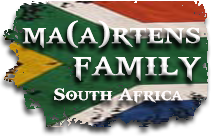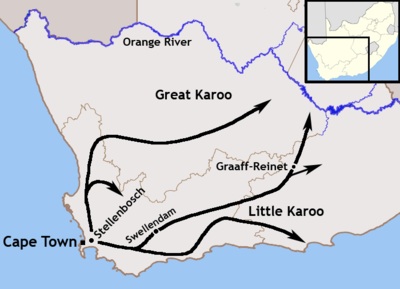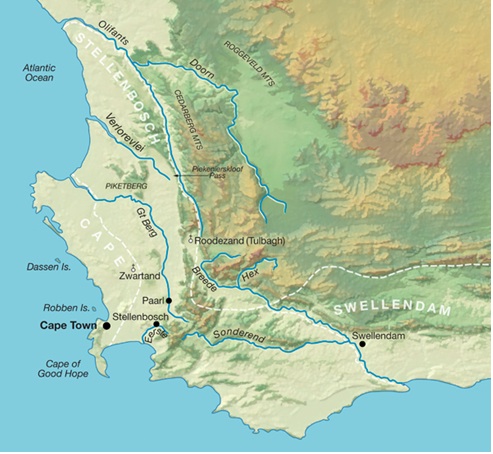This section only provides a very high level overview of the situation.
By 1740, in the Cape of Good Hope, the phenomenon of the Trekboer had begun as more and more farmers became stock farmers due to overproduction of argricultural products which had to be sold the the VOC (at set VOC tariffs). Families were large, forcing young men to find grazing land for their stock. These men would pack their belongings in a wagon and become nomadic farmers moving northwards, both to find better grazing for their livestock and to escape the autocratic rule of the VOC who still governed the Cape.
The trek farmers followed a routine whereby they would graze the land rented from the VOC until, due to the relatively small sizes, the land became exhausted and they would merely pack up and trek to the next available grazing land. Intense resistance from the San people (the so-called Bushman) were experienced in which the pioneer farmers would suffer stock theft and continued sporadic attacks by the San over a period of more than 20 years. This resulted in several punitive expeditions against the San. At the same time, though, it was not uncommon for the farmers to employ Khoikhoi (also referred to colloquially as the Hottentot) people to help them in herding the cattle, to the point of arming them.
By 1778 the border of the Swellendam district had reached the Great Fish River, which then became the Eastern border. The VOC, concerned that they were losing control over the population, were forced to follow in their tracks and establish new districts such as Swellendam and Graaff Reinet. The frontier farmers, however, kept on moving across the borders. This eventually put them in a position of direct conflict with the Xhosas who were not prepared to part easily with their own heritage.
The districts were very large which sometimes leaves the researcher in a quandary. A child may have been born in Graaff-Reinet but until it became an established district, the birth would be recorded as being in Stellenbosch.
Thus it was that by the time the Great Trek, one of the greatest mass-migrations in history started in 1835, most of the trekkers were already in the present-day districts of Graaff-Reinet, Middelburg, Cradock, Aliwal North and Burgersdorp. Indeed some farmers had already crossed the Great River (also known as the Orange and Gariep).






Recent comments